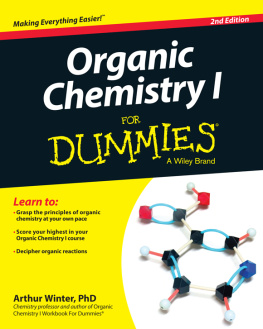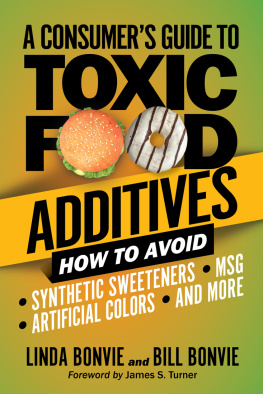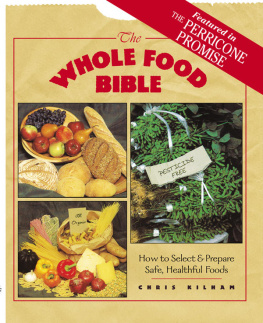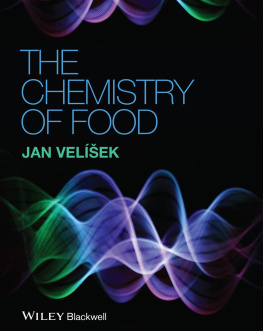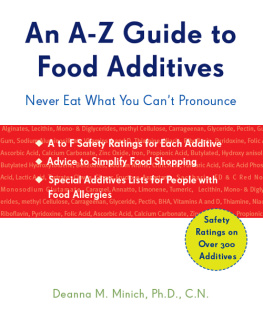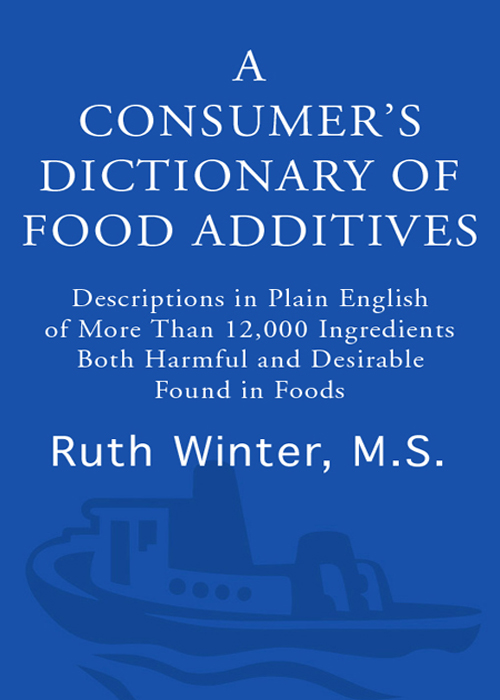ALSO BY RUTH WINTER
A Consumer's Dictionary of Cosmetic Ingredients
Vitamin E
The Anti-Aging Hormones
Super Soy
A Consumer's Guide to Medicines in Food
A Consumer's Dictionary of Medicines: Prescription, Over-the-Counter, Homeopathic, and Herbal
A Consumer's Dictionary of Household, Yard, and Office Chemicals
Poisons in Your Food
Ageless Aging
Cancer-Causing Agents
Beware of the Food You Eat
Arthur Winter, M.D.; Robin Winter-Sperry, M.D.; Craig Winter;
Grant Winter; Samantha, Katelynd, Hunter, and Johnathan Sperry
The best editions I ever created
CONTENTS
Appendix A:
Appendix B:
Appendix C:
GUESS WHAT YOU ATE?

In this completely revised and updated seventh edition of A Consumer's Dictionary of Food Additives, you will learn how safeguards have weakened since the last edition and that hundreds of new and untested chemicals have entered the market.
Are you aware, for example, that direct and indirect additives in your food and drink at this writing may be
Additives are substances, or a mixture of substances, other than basic foodstuffs, that are present in food as a result of any aspect of production, processing, storage, or packaging. BHT and BHA are examples of preservatives and Red No. 3 and annatto are examples of colorings. Some substances, vitamins E and C, for example, are both nutrients and additives. The two vitamins are sometimes added for their ability to retard rancidity. The majority of food additives, however, have nothing to do with nutritional value, as you will see from the contents of this dictionary. Most are added to feed our illusions. We want enhanced food because all our lives we have been subjected to beautiful pictures of foods in our magazines, on television, and on the Internet. We have come to expect an advertiser's concept of perfection in color and texture, even though Mother Nature may not turn out all her products that way. As a result, the skins of the oranges we eat are dyed bright orange to match our mental image of an ideal orange. Our poultry is fed a chemical to turn the meat yellower and more appetizing, and our fruits and vegetables are kept unblemished by fungicides, pesticides, herbicides, and other antispoilants. Our meat and fish have color added to give the appearance of greater freshness. Food additives are estimated to be $23 billion market worldwide.
Lest you think that all additives are harmful, I want to reassure you that many are beneficial. They delay spoilage, keep us well-fed, and protect against illness. But scores of added substances are unnecessary, and some may be harmful, even lethal.
I know how all this can be confusing with all the overlapping underfunded regulatory agencies, the conflicting media reports about the newest studies, and the advice from the latest diet guru. This seventh edition of A Consumer's Dictionary of Food Additives has been written to help you choose more wisely in today's marketplace.
Positive Changes

Since the first edition of A Consumer's Dictionary of Food Additives was published in 1978 there have been major positive changes.
First, the U.S. Food and Drug Administration (FDA) and the World Health Organization (WHO); the European Union; and the Japanese, Australian, and New Zealand food protection agencies have, among others, increased computerization of information about food additives and made the data available to us and to each other on the Internet.
Second, the evaluation of food additives has become international, so many more eyes are watching the potions cooked up in the lab.
Third, readers like you are making an effort to become educated about what is good for you and what is not and how to pierce the hype that surrounds food and drink today. If this weren't true, you wouldn't be reading this book.
Persistent Problems

However, some problems mentioned in all six previous editions haven't gone away.
ANTIBIOTICS
The body of evidence linking extensive antimicrobial use in food-producing animals and resistant antibiotic strains in human beings continues to grow. Other nonhuman uses of antimicrobials (in pet animals, aquaculture, and horticulture) may also play a role in this transfer of resistant bacteria. When resistant pathogenic bacteria are the cause of infections in humans (as well as in animals), it will often result in inappropriate and/or more protracted therapy to cure infections and, increasingly, the infections become incurable. Since the first edition of A Consumer's Dictionary of Food Additives, regulators, including the FDA, the Food and Agriculture Organization (FAO) of the United Nations, the World Organization for Animal Health (OIE), and WHO, have been trying in vain to deal with the situation in which the same classes of antimicrobials may be used in both humans and animals. Few new antibiotics have been developed to replace those that have become ineffective through resistance.
The Union of Concerned Scientists, a science-based nonprofit organization, estimates that each year 25 million pounds of valuable antibioticsroughly 70 percent
The bill bans only the feed-additive uses of the named drugs for nontherapeutic purposes, defined as use in the absence of any clinical sign of disease in the animal for growth promotion, feed efficiency, weight gain, routine disease prevention, or other routine purpose. By specifically targeting the nontherapeutic use of antibiotics, the bill allows for sick animals to receive treatment and for legitimate prophylaxis. The bill leaves farmers with many options, including other nontherapeutic antibiotics that are not used in human medicine, as well as improved animal husbandry practices such as those utilized in Europe and on some U.S. farms. In addition, the legislation provides that if a nontherapeutic antibiotic that is now used only in animals (i.e., one that is not one of the seven named antibiotics) also becomes potentially important in human medicine, the drug would be automatically restricted from nontherapeutic use in agricultural animals unless the FDA determines that such use will not contribute to development of resistance affecting humans.
The consumer is becoming more aware of the danger of nontherapeutic use of antibiotics in animal feed; thus you now see RAISED WITHOUT ANTIBIOTICS signs on many products in the supermarkets. PAMTA will help cut down on the salting of animal feed with antibiotics just for weight gain. The European Union has banned most antibiotics in feed. This is progress!



